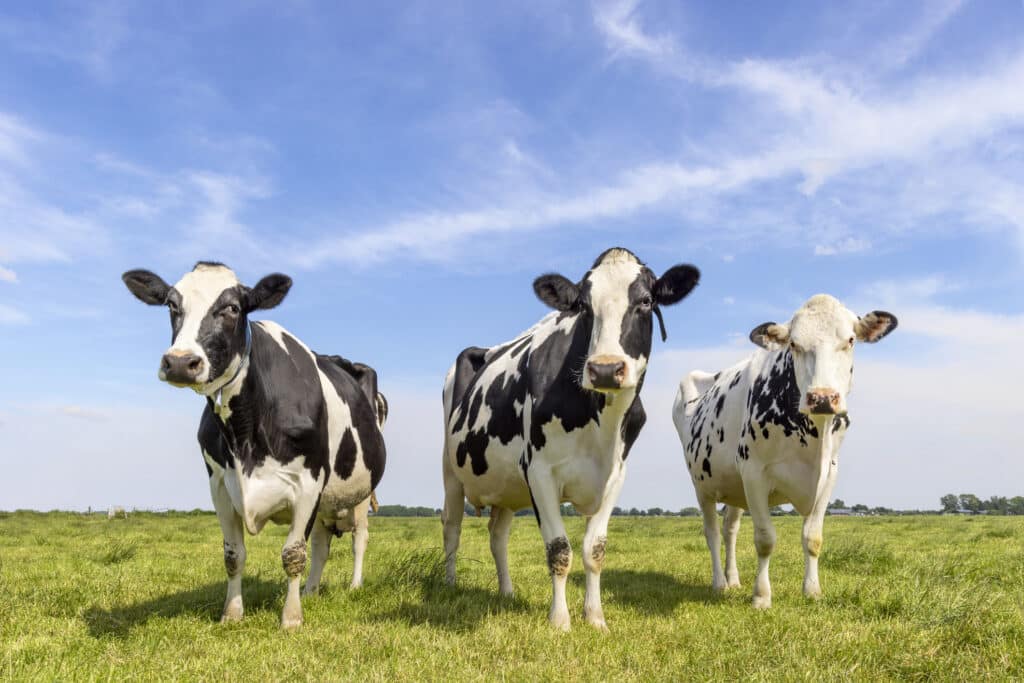On National Farm Animal Day, April 10, we celebrate farm animals’ significant contributions to our society. There are obvious contributions, such as working on the farm, providing material for products or contributing to our food supply. But many people aren’t aware of the way farm animals are helping us address climate change by contributing to the decarbonization of our economy.
At the Oregon Dairy Farmers Association, we want to acknowledge our dairy cows and their contributions to sustainable agriculture. In particular, they are helping us achieve our goal to eliminate greenhouse gas emissions from our operations by 2050.
All farm animals produce nutrients that can be used as organic fertilizer and even energy from surface-level methane. Decomposing organic matter from all sources — agriculture, wastewater treatment, landfills — accounts for 26% of U.S. methane emissions. We can and should capture methane from our waste streams and prevent that methane from entering the atmosphere.
Many of our dairy farms are turning organic matter into a valuable renewable energy source called Renewable Natural Gas (RNG). RNG uniquely takes a product that can negatively impact the environment — methane — and creates a reliable energy resource that is fully compatible with our current natural gas pipeline infrastructure and appliances — serving a productive role in the renewable energy transition.
How do we do this? The process is quite simple. Manure is captured in a methane digester and processed for about 20 days. This process produces RNG that can be used to run equipment and vehicles, heat buildings, or be delivered to a local gas utility for use by its consumers. After the digester process captures the methane, the manure is again recycled by separating it into solids and liquids. The solids can be used for bedding for the cows, while the liquid is used as a fertilizer for crops. This one process helps farms capture more emissions than they create.
RNG benefits more than just farms. According to the Oregon Department of Energy and Washington Department of Commerce, generating RNG from digesters — whether it’s agriculture, wastewater treatment plants or landfills — can replace 7.7% and 6.3% of each state’s current fossil-based natural gas use, respectively. While that may not sound like a lot, consider that after decades of heavily-subsidized investment, Oregon generates only 7% of its electricity from wind and only 1.67% from solar. For Washington, those numbers are 5.36% for wind and a mere 0.3% for solar. RNG is a powerful partner to wind and solar because it expands the reach of renewable energy, and with additional investment, we have the power to do much more.
Dairies have become highly efficient with a smaller carbon footprint, even as the demand for dairy products has increased. With innovative practices in cow health, improved feed, and modern management practices like RNG, the environmental impact of producing a gallon of milk has shrunk significantly over the last 15 years, requiring 30% less water, 21% less land, and generating a 19% smaller carbon footprint.
RNG projects are being announced around the Pacific Northwest as farmers and municipal waste facilities form partnerships with local gas utilities to deliver it to consumers. But RNG is just one essential piece of the puzzle. We cannot solve the challenge of decarbonization with simple slogans that rely on one solution. It is crucial to maintain a diverse portfolio of fuel sources that work together to combat climate change. RNG complements other renewable energy sources like wind and solar because it is storable, dispatchable and can be combined with other fuel, heat and power generation resources to provide reliable energy when families and businesses need it.
I’m so proud of the work dairy farmers are doing across the Pacific Northwest. Dairy farms represent the second-largest agricultural sector in the United States, contributing over $1.6 billion to the economy last year. Nearly 500 of those farms are right here in Oregon and Washington, and they are a vital part of the rural economy and its communities. Our responsibility as dairy farmers extends beyond the health and welfare of our farm animals. It requires that we are good stewards of the land and environment where we, and our animals, live.
Tami Kerr has served as executive director of the Oregon Dairy Farmers Association for nine years. She is proud to represent the hardworking dairy producers across the state and focuses on legislative and regulatory issues at the local, state and federal levels.
This piece was originally published in Capital Press

